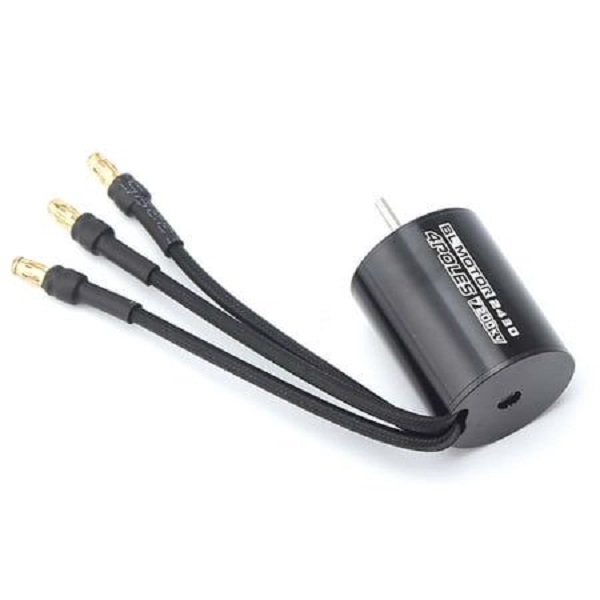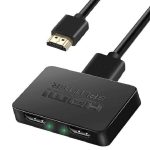In the world of motors, two main types dominate: brushed and brushless. While both serve the purpose of converting electrical energy into mechanical energy, they differ significantly in their construction, operation, and performance. This article delves into the core differences between brushed and brushless motors, helping you understand their unique characteristics and ideal applications.
Contents
- 1 Construction and Operation: A Tale of Two Designs
- 2 Performance and Efficiency: A Clear Advantage for Brushless
- 3 Maintenance and Lifespan: Durability Takes the Lead
- 4 Control and Responsiveness: Precision in Motion
- 5 Cost Considerations: Balancing Upfront and Long-Term Costs
- 6 Choosing the Right Motor for Your Needs
- 7 A Deeper Dive into Brushless Motor Advantages
- 8 Quiet Operation: Reducing Noise Pollution
- 9 Precise Control and Dynamic Response: Enhancing Performance
Construction and Operation: A Tale of Two Designs
The most fundamental difference lies in their construction and how they achieve rotation.
Brushed Motors: The Traditional Approach
Firstly, let’s examine brushed motors. These motors employ a relatively simple design. They feature a rotating armature with windings connected to a commutator. The commutator is a segmented ring that makes contact with stationary brushes, typically made of carbon. As the armature rotates, the brushes make contact with different segments of the commutator, reversing the current flow through the windings. This reversal of current creates a rotating magnetic field that interacts with permanent magnets on the stator, causing the armature to spin.
Brushless Motors: The Modern Marvel
On the other hand, brushless motors operate on a different principle. Instead of brushes and a commutator, they utilize electronic commutation. In this design, the rotor typically houses permanent magnets, while the stator contains the windings. An electronic speed controller (ESC) precisely controls the current flow through the stator windings, creating a rotating magnetic field that interacts with the rotor’s magnets, causing it to spin.

Performance and Efficiency: A Clear Advantage for Brushless
This difference in design leads to significant variations in performance and efficiency.
Efficiency and Heat Dissipation
Firstly, brushless motors are inherently more efficient. The absence of brushes eliminates the friction and energy loss associated with brush contact. This translates to less wasted energy and longer runtimes, especially crucial for battery-powered devices. Moreover, brushless motors generate less heat due to their higher efficiency, reducing the risk of overheating and prolonging their lifespan.
Conversely, brushed motors suffer from energy loss due to brush friction. This friction also generates heat, which can lead to wear and tear on the brushes and the commutator, requiring more frequent maintenance and replacement.
Power and Torque
Secondly, brushless motors generally offer higher power and torque for a given size. They can operate at higher speeds and with greater precision, delivering more power for demanding applications. This makes them ideal for power tools, electric vehicles, and other applications where high performance is crucial.
While brushed motors can provide adequate power for many applications, they may not match the power output of a brushless motor of the same size. This is particularly noticeable in high-performance applications where torque and speed are critical factors.
Maintenance and Lifespan: Durability Takes the Lead
Another key difference lies in their maintenance requirements and overall lifespan.
Wear and Tear
Brushless motors, with their lack of brushes, experience significantly less wear and tear. There are no brushes to wear down or replace, reducing maintenance needs and increasing longevity. Furthermore, the absence of brushes eliminates the issue of carbon dust generated by brush wear, which can contaminate the motor and surrounding components.
In contrast, brushed motors require periodic brush replacement due to wear and tear. The commutator can also wear down over time, requiring maintenance or replacement. This increased maintenance adds to the overall cost and downtime associated with brushed motors.
Durability and Reliability
Moreover, brushless motors are generally more durable and reliable. They are less susceptible to damage from dust and debris, making them suitable for harsh environments. Their electronic commutation system is also more robust and less prone to failure compared to the mechanical commutation of brushed motors.

Control and Responsiveness: Precision in Motion
Brushless motors offer superior control and responsiveness compared to their brushed counterparts.
Precise Speed and Torque Control
The electronic commutation of brushless motors allows for precise control over speed and torque. This enables smoother operation and better performance in applications requiring fine-tuned control, such as robotics, automation, and precision machinery.
While brushed motors can be controlled to some extent, their mechanical commutation limits the level of precision achievable. This can result in less accurate movements and reduced performance in applications requiring precise control.
Dynamic Response
Furthermore, brushless motors exhibit faster response times. They can quickly adjust to changes in load or speed, making them ideal for dynamic applications such as drones, electric vehicles, and agile robots. This responsiveness allows for quick adjustments and precise movements, enhancing performance and efficiency.
Cost Considerations: Balancing Upfront and Long-Term Costs
While brushless motors offer numerous advantages, they typically come with a higher initial cost compared to brushed motors. However, it’s essential to consider the long-term cost implications.
Initial Investment
The higher upfront cost of brushless motors is often offset by their lower operating costs. Their higher efficiency translates to lower energy consumption, reducing electricity bills over time. Moreover, their reduced maintenance needs and longer lifespan minimize repair and replacement costs.
Long-Term Savings
While brushed motors may seem more affordable initially, their higher maintenance requirements and shorter lifespan can lead to higher costs in the long run. Frequent brush replacements, potential commutator repairs, and increased energy consumption contribute to the overall cost of ownership.
Therefore, when evaluating the cost of brushed and brushless motors, it’s crucial to consider both the initial investment and the long-term operating costs. In many cases, the long-term savings of brushless motors outweigh their higher upfront cost.

Choosing the Right Motor for Your Needs
Ultimately, the choice between a brushed and brushless motor depends on your specific application and requirements.
Applications Where Brushed Motors Excel
Brushed motors remain a viable option for applications where cost is a primary concern and performance requirements are less demanding. They are commonly found in appliances like hair dryers, electric toothbrushes, and toys, where their simplicity and lower cost are advantageous.
Applications Where Brushless Motors Shine
Brushless motors are the preferred choice for applications where efficiency, performance, durability, and control are paramount. They excel in power tools, electric vehicles, drones, robotics, industrial automation, and various other high-performance applications.
By carefully considering your needs and priorities, you can choose the motor that best suits your specific application.
A Deeper Dive into Brushless Motor Advantages
While we’ve touched upon the core differences, let’s further explore the specific advantages that brushless motors bring to the table.
Enhanced Energy Efficiency: Saving Power and the Planet
One of the most significant benefits of brushless motors is their exceptional energy efficiency. This stems from the elimination of physical brushes and the associated friction. In brushed motors, the constant contact between brushes and commutator generates friction, leading to energy loss in the form of heat. This wasted energy reduces the overall efficiency of the motor.
In contrast, brushless motors utilize electronic commutation, eliminating the friction and energy loss associated with brushes. This translates to higher efficiency, meaning more of the electrical energy is converted into mechanical energy, rather than being dissipated as heat. This improved efficiency has several implications:
-
Longer Runtimes: For battery-powered devices, such as cordless power tools and electric vehicles, higher efficiency translates to longer runtimes on a single charge. This extends the usability of these devices and reduces the frequency of recharging.
-
Reduced Energy Consumption: In applications where motors operate continuously, such as HVAC systems and industrial machinery, the higher efficiency of brushless motors can lead to significant energy savings over time. This not only reduces operating costs but also contributes to a smaller environmental footprint.
-
Lower Operating Temperatures: Since brushless motors generate less heat, they operate at lower temperatures. This reduces the risk of overheating, which can damage the motor and shorten its lifespan. Lower operating temperatures also contribute to increased reliability and longevity.

Minimized Maintenance: Saving Time and Effort
Another compelling advantage of brushless motors is their reduced maintenance requirements. Brushed motors require periodic maintenance to replace worn-out brushes and maintain the commutator. This involves downtime and the cost of replacement parts.
Brushless motors, on the other hand, eliminate the need for brush replacement and commutator maintenance. The absence of brushes means there are no parts to wear down or replace regularly. This reduces maintenance time and costs, contributing to increased productivity and lower operating expenses.
Furthermore, the lack of brushes eliminates the production of carbon dust, which can contaminate the motor and surrounding components. This makes brushless motors suitable for clean environments, such as medical devices and food processing equipment.
Quiet Operation: Reducing Noise Pollution
Brushless motors operate significantly quieter than brushed motors. The absence of brushes eliminates the noise associated with brush contact on the commutator. This makes them ideal for noise-sensitive environments, such as:
-
Residential Appliances: Household appliances like vacuum cleaners, washing machines, and refrigerators can benefit from the quiet operation of brushless motors, creating a more peaceful home environment.
-
Power Tools: Cordless power tools equipped with brushless motors are less disruptive, making them suitable for indoor use and reducing noise pollution in outdoor workspaces.
-
Electric Vehicles: The quiet operation of brushless motors contributes to the overall serenity of electric vehicles, enhancing the driving experience.

Precise Control and Dynamic Response: Enhancing Performance
Brushless motors offer superior control and responsiveness compared to brushed motors. The electronic commutation allows for precise control over the motor’s speed and torque. This precision is crucial in applications requiring accurate movements, such as:
-
Robotics: Brushless motors enable robots to perform intricate tasks with precision and accuracy, making them essential for industrial automation, surgical robots, and other robotic applications.
-
CNC Machines: In computer numerical control (CNC) machines, brushless motors provide the precise control needed for accurate cutting, milling, and shaping of materials.
-
Drones: The responsiveness of brushless motors allows drones to quickly adjust to changes in wind conditions and perform agile maneuvers, making them ideal for aerial photography, surveillance, and delivery applications.
Furthermore, brushless motors exhibit faster dynamic response, meaning they can quickly adjust to changes in load or speed. This is crucial in applications requiring rapid adjustments and precise movements, such as electric vehicles, power tools, and agile robots.


